This article was medically reviewed by Jonas DeMuro, MD. Dr. DeMuro is a board certified Pediatric Critical Care Surgeon in New York. He received his MD from Stony Brook University School of Medicine in 1996. He completed his fellowship in Surgical Critical Care at North Shore-Long Island Jewish Health System and was a previous American College of Surgeons (ACS) Fellow.
There are 14 references cited in this article, which can be found at the bottom of the page.
wikiHow marks an article as reader-approved once it receives enough positive feedback. In this case, 82% of readers who voted found the article helpful, earning it our reader-approved status.
This article has been viewed 77,274 times.
Experts agree that it's important to take things slowly when you start targeting your medial collateral ligament (MCL) with exercises, and you should stop if you feel any pain.[1] Your MCL is a ligament in your knee that connects your thigh bone to your shin bone, which helps stabilize your knee. Research suggests that you can injure your MCL by bending, twisting, or changing directions quickly.[2] You might be worried about injuring your MCL if you're active or play sports, or you might want to rehab your MCL after an injury. Fortunately, there are exercises you can do to strengthen your MCL.
Steps
Preventing Injury
-
1Increase intensity over time. Start with a mild or moderate exercise routine and gradually increase how long and hard you exercise. 20 minutes three times a week is a great amount of time to spend per week exercising when you first start out. You don't want to stress your body or muscles because that also increases your chance of injury.
-
2Drink plenty of water. Your muscles rely on you to keep them hydrated so they can continue to work well. Dehydrated muscles are more prone to injury. It's also not good for your body.
- Drink at least 16 oz. of water several hours before your workout. Remember to drink water while you workout as well.
Advertisement -
3Pay attention to your body. Your body will let you know when it is reaching its limits. If you experience pain or become light-headed, it means you pushed yourself too far and you need to dial back the intensity of your activity. It's your responsibility to pay attention to what your body is telling you and to stop exercising and let your body heal. Continuing with what you are doing will lead to acute or chronic injury.
-
4Do some active stretching. Active stretching helps to jumpstart the body during a warm-up before you do any exercise. Stretching prepares your muscles for the kind of swift, forceful movement they are exposed to during sporting activities. The following leg swinging exercise is an example of an active stretch which helps to warm-up the MCL.[3]
- Stand in front of a wall, with your feet shoulder-width apart. Press your palms against the wall at shoulder level, keeping your stomach muscles engaged.
- Lift one leg sideways until it is above hip level, then swing it back down so it crosses in front of the other leg. Continue swinging for 10 to 15 repetitions, then repeat with the other leg. Do two to three sets for each leg.
-
5Do passive stretching. Passive stretching helps to improve flexibility in muscles and ligaments during your cool down after exercise. These stretches are important to avoid injury. The following quadriceps stretch is a good example of a passive stretch which helps to maintain the elasticity of the MCL.[4]
- Stand in front of a wall, pressing the palm of your right hand against it for support. Lift your right foot by bending your knee, until the right heel touches the left butt cheek. Use your left hand to grip your ankle and hold the foot in place for 30 to 60 seconds. Repeat with the left foot.
- Keep in mind that this exercise (and other passive stretches) should never be performed before exercise since they relax the muscles and ligaments, possibly leaving them more prone to injury during exercise. These should only be performed during a cool down.
-
6Give your MCL time to recover after exercise. Allowing your body adequate rest time after strenuous physical activity is an essential part of avoiding injury. Your body needs time to heal after exercising, usually at least one full day of rest. This helps your muscles strengthen and maintain good health.
- During exercise, the MCL sustains mini tears. These mini tears will heal on their own, making the MCL stronger as a result during rest time. But if no rest time is given, the micro tears will not heal and the MCL becomes much more prone to injury.
-
7Wear appropriate clothing while exercising. Wearing appropriate clothing while exercising helps you to avoid placing unnecessary stress on your MCL. You don't want to wear clothing that is too tight or that restricts movement. When the MCL becomes stressed, such as that caused by inappropriate clothing, it becomes more prone to injury.
- When doing activities that involve running, it is recommend that you wear loose shorts that cut off above the knee. Longer, tighter shorts can restrict knee movement, putting more stress on the knee joints.
-
8Make sure your shoes provide enough support. Wearing shoes with adequate cushioning and support is essential for preventing injury to the MCL. Shoes meant for running are a good choice for use during sports activities. Replace old shoes and make sure you have enough sole support.
- Worn-out shoes are ineffective at reducing impact to the knees, stressing the MCL and making it weak. Running shoes should be replaced every 300 to 500 miles (480 to 800 km).
- People with flat feet should also ensure that their shoes provide enough sole support. Having flat feet puts extra strain on the MCL, making it more prone to injury. Adequate sole support alleviates this strain — an orthotic may need to be added to get the desired support.
-
9Practice standing on one foot. Standing on one foot improves your balance, training your MCL to become stronger and more stable. Greater stability goes a long way to prevent injury. It trains your muscles to hold their place and keep your knee stable.
- Stand up straight with your shoulders back and your stomach muscles engaged. Slowly lift one foot off the floor and try to hold this position for 30 seconds.
- If you start to wobble or lose your posture, try closing your eyes. This will help you to focus on your balance and leg coordination.
- After 30 seconds, switch to the opposite foot and repeat the exercise. Repeat the exercise three times on each foot.
Performing Strengthening Exercises
-
1Perform lunges. Lunges are are the perfect exercise for stretching and strengthening the muscles and ligaments in the knee, including the MCL. By strengthening this entire area of your knee, you put less strain on your MCL. Try doing lunges regularly to keep your MCL healthy.[5]
- To perform a lunge, stand with your feet slightly wider than shoulder-width apart. Keep your back straight, your tummy tucked in and your eyes looking straight ahead.
- Take a big step forward with your right foot, bending the knee until your thigh is parallel with the floor. The knee should not extend past the tips of your toes.
- Bend the back knee until it is almost (but not quite) touching the floor. Hold this position for 10 seconds, then return to the starting position and repeat with the other leg.
-
2Do leg curls. Leg curls are another great exercise for strengthening both the MCL and hamstrings (a set of four muscles at the back of the thigh which are essential for flexing the knee). These exercises are even more effective if you place a resistance band or ankle weight around your ankles as you perform them. Here's the correct way to do them:
- Lie face down on an exercise mat, with your legs stretched out behind you. Place an ankle weight or resistance band around your ankle, then slowly lift up your right foot until your heel touches your behind.
- Slowly lower your right foot back to the floor. Remember to keep your hips pressed into the mat at all times — if you raise them, you risk straining your knee instead of strengthening it.
- Repeat the exercise for three sets of 10 to 20 repetitions, then do the same with the opposite leg.
-
3Try pillow squats. Pillow squats (exactly what they sound like — squats with a pillow between your knees) help to strengthen the MCL, along with a number of other muscles and ligaments in the inner knee. Strengthening the muscles and ligaments surrounding the MCL is important since they are basically the MCL support system. Squats target the highest number of muscles and ligaments in a single exercise, so don't forget to include them in your workout.
- Stand up straight and place a thick pillow between your knees. Thicker pillows work better since using a thin pillow will significantly increase the difficulty level of the exercise. You could even use a medicine ball instead, if you prefer.
- Stand with your feet about hip-distance apart, keeping your back straight, your tummy tucked in and your eyes looking straight ahead. Bend your knees as if you are about to sit in an invisible chair, sticking your butt out behind you.
- You don't need to do a full squat (with your thighs are parallel to the floor). You can just do a half-squat to reap MCL-strengthening benefits.
- Slowly return to the starting position, then repeat the exercise for three sets of 10 reps. Allow one minute of rest time between each set — rest time is necessary for optimum muscle strengthening and growth.
-
4Perform calf exercises. When performing leg strengthening exercises, it's important to exercise the entire leg throughout your routine (not just specific parts). If you only focus on specific areas, you could be left with a weak area. Calf exercises help to strengthen the MCL while also building the calf muscles, which support the knee and help to relieve pressure on the joints and ligaments.
- Stand with your feet shoulder-width apart. Make sure that you have something to grab onto for balance like an exercise bar or the back of a chair.
- Lift both heels off the ground, rising up onto the balls of your feet as high as you can go. Then slowly lower your heels, flattening your feet back onto the ground.
- Repeat this exercise for three sets of 15 to 20 repetitions.
-
5Give sumo deadlifts a try. Sumo deadlifts train the muscles and ligaments in the inner knee, including the MCL and the VMO (the vastus medialis obliquus, a teardrop-shaped muscle that helps to stabilize the knee). The VMO helps to disperse stress within the kneecap, which is essential for preventing injury to the MCL.[6]
- Place your feet wider than your hips. Turn your toes out at a 45 degree angle — this is very important in order to make the exercise as effective as possible.
- Keep your back straight, your shoulders back and your stomach muscles engaged. This will help you to maintain good posture as you complete the exercise.
- Lower yourself by bending your knees and pushing your butt backwards, as if you were using it to close a door behind you. Slide your hands down along your thighs as you descend.
- When your hands reach your kneecaps, stop and slowly return to the starting position. Repeat for three sets of 10 repetitions, resting for one full minute between each set.
-
6Practice contracting your quads. Contracting the muscles in your quadriceps (the muscles at the front of your thighs) engages the muscles and ligaments in the knee. This helps to strengthen the MCL. Building up the quads themselves is also a good idea, since this will provide more support for the knee joints.
- Lie down on an exercise mat on your back, extending your legs fully. If your knees need some extra support, place a rolled up towel or piece of foam underneath them.
- Contract (or squeeze) the muscles in your quads and hold for ten seconds before relaxing. Do 10 to 20 contractions, relaxing for thee seconds between each.
-
7Do hip abductions. Hip abductions are another great exercise for strengthening the MCL. Having strong, flexible hips will help absorb some of the impact while running. It also takes pressure off the knees.
- Stand with your feet shoulder-width apart, holding onto the back of a chair for balance. Place an ankle weight or resistance band around your right ankle.
- Slowly lift your right foot off the floor and extend it out to the side, as high as your leg will go. Return to the starting position and repeat for three sets of 10 to 20 repetitions, before repeating on the other leg.
-
8Use the leg press machine. Most gyms are equipped with a leg press machine. This machine is excellent for strengthening the muscles surrounding the knees, including the VMO. It also helps to provide a sturdy support system for the MCL.
- Sit into the machine, lying back against the seat (which should recline at a 30 degree angle). Place your feet on the vertical plane in front of you.
- Adjust the weight according to your strength level, then use your feet to push the weight away from your body by extending your legs. Don't lock your knees when you extend your legs. Try to keep them slightly bent.
- Slowly return to the starting position, then repeat the exercise for two or three sets of 10 to 20 repetitions. Rest for a full minute between each set.
-
9Exercise with a loop band. Exercising with a loop band is a great way to engage the MCL. The band creates pressure against the outside of the knee, which forces the MCL to push the knee outward. This recreates the type of stress the MCL is exposed to during normal physical activity.
- Place the loop band around your ankles and stand with your feet hip-width apart, toes pointing forwards. Keep your back straight and your knees slightly bent.
- Take five sideways steps towards the right, using your hips and maintaining your stance as much as possible. Now take five sideways steps towards the left. This is one full set.
- Do three sets of this exercise, resting for one full minute between each set.
Improving Agility
-
1Do plyometrics. Plyometrics incorporate jumping movements and strengthen the muscles. This type of exercise also increases the speed and agility you need for most sports. Do these exercises to help get your body used to quick movements and using a lot of power.[7]
- You need to land lightly while doing plyometrics so that you catch your weight on the balls of your feet. Roll back to your heel, knees slightly bent and hips straight.
-
2Practice hopping over a cone. You will hop over a cone to increase strength and control of your MCL. Practice doing several sets of 20 reps. Stand with a 6 inch cone to the left and hop to the left over the cone landing softly as described in the plyometrics step.
- Repeat this with the cone to your right, hopping to the right.
- Now, jump forward over the cone. Practice jumping backwards over the cone too.
- Do not snap your knee back to straighten it. Keep your knees stable.
-
3Do single leg hops over the cone. You should practice hopping over the cone with one foot, doing 20 reps. This will further increase the power, strength and control you have over your MCL. Hop forward and backward over a 6 inch cone, landing lightly on the balls of your feet and maintaining a slight bend at the knee.
- Switch feet and practice hopping over the cone with the other leg.
-
4Perform the scissors jump. Do 20 reps of the scissors jump to increase strength and power. This will help significantly with jumping during sports. Make sure your knees are stable during this exercise, and do not allow your knee to cave in or out.[8]
- Use your right leg to lunge forward, keeping your knee directly over your ankle.
- Push with your right foot so your left leg moves into the lunge position.
-
5Do shuttle runs. Sprinting trains your knee, ankle and hip to remain stable during sudden movements. This increases strength and agility. Practice shuttle runs regularly to maintain speed, strength and dynamic stability.
- Start at a cone and sprint forward to a second cone, a short distance away. Run backwards to the third cone and forward to the fourth. Practice going forward and backwards from cone to cone.
-
6Practice diagonal runs. Diagonal runs are basically shuttle runs that focus on the outside of each leg and foot. This stabilizes the knee, ankle and hip complex. It also increases agility and makes your MCL stronger.
- Run to a cone placed to your left. You will want to pivot off the left foot as you run to the next cone. Pivot off your right foot to the next cone.
- Maintain proper form and don't allow your knees to bend inward. Always keep your knees slightly bent so they are directly over the ankle joint.
-
7Do bounding runs. A bounding run involves running across 44 yards. You will start at shorter distances and increase your distance over time with practice. This exercise has multiple benefits, increasing flexibility, strength, power and speed.
- You will want to begin along the sidelines. When you run, push your knees high up toward your chest. As your legs come down, land on the balls of your feet. Your hip needs to be straight and knees slightly bent.
Warnings
- The most common cause of injury to the MCL is a blow to the outer side of the knee, which is more likely in sports like soccer and football.⧼thumbs_response⧽
References
- ↑ https://myhealth.alberta.ca/Health/aftercareinformation/pages/conditions.aspx?hwid=bo1710
- ↑ https://www.uofmhealth.org/health-library/abn2411
- ↑ https://www.acropt.com/blog/active-stretching-a-brief-overview
- ↑ https://riverview.org/blog/fitness-2/how-to-perform-static-dynamic-passive-and-pnf-stretches/
- ↑ https://www.nerdfitness.com/blog/how-to-do-a-lunge/
- ↑ https://www.coachmag.co.uk/barbell-exercises/8313/sumo-deadlift
- ↑ http://www.sportsinjuryclinic.net/sport-injuries/knee-pain/mcl-sprain/strengthening-mcl-injury
- ↑ https://www.bodybuilding.com/exercises/scissors-jump
- De Carlo, M. Armstrong B. Rehabilitation of the knee following a sports injury. Clin Sports Med. 2010, 29:81-106
- Kozier, B. et al Fundamentals in Nursing Concept, Process and Practice 2006 Person Prentice Hall seventh edition.
- Smeltzer S. and Bare, B. 2006 Brunner and Suddarth Textbook of Medical-Surgical Nursing Vol 2. Lippincott, Williams and Wilkins Inc.
- Gardiner JC, Weiss JA, Rosenberg TD. Strain in the human medial collateral ligament during valgus loading of the knee. Clin Orthop Relat Res. 2001;391:266–74.
- Groff Y, Harner CD. Medial collateral ligament reconstruction. In: DW J., editor. Master techniques in orthopaedic surgery: reconstructive knee surgery. Philadelphia: *Lippincott Williams & Wilkins; 2003.
- Phisitkul P, et al. MCL injuries of the knee: current concepts review. Iowa Orthop J.2006;26:77–90.
About This Article
You can strengthen your MCL by regularly including lunges in your workout routine. To perform a lunge, stand with your feet slightly wider than shoulder-width apart, looking straight ahead. Next, take a big step forward with your right foot, bending the knee until your thigh is parallel to the floor but making sure your knee doesn’t extend past your toes. From this position, bend your back knee until it almost touches the floor and hold for 10 seconds before returning to the starting position and repeating with the other leg. For more strengthening advice from our Medical co-author, like how to properly stretch, read on!
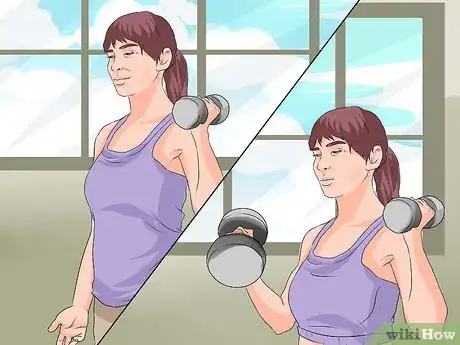

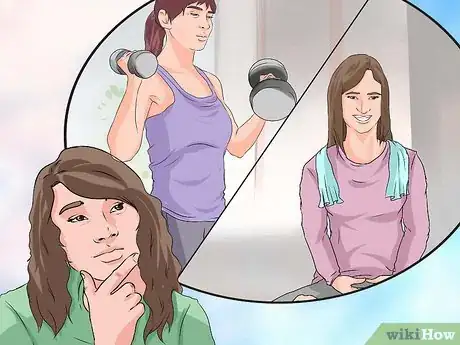
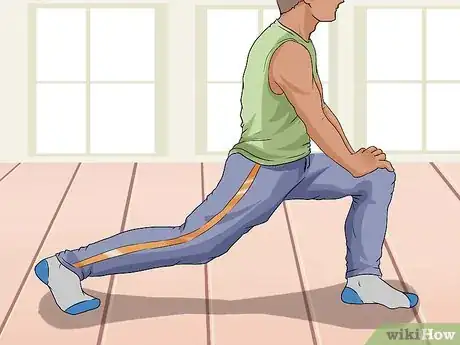
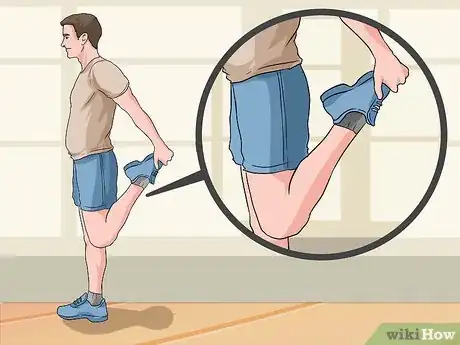

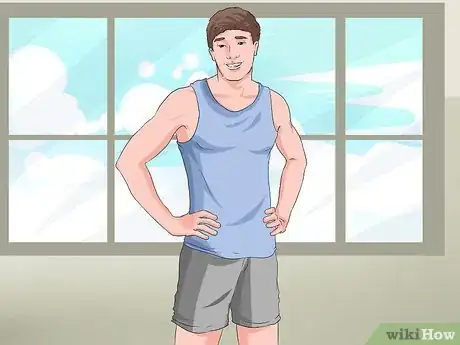

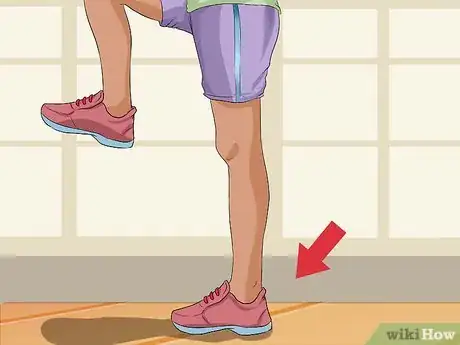

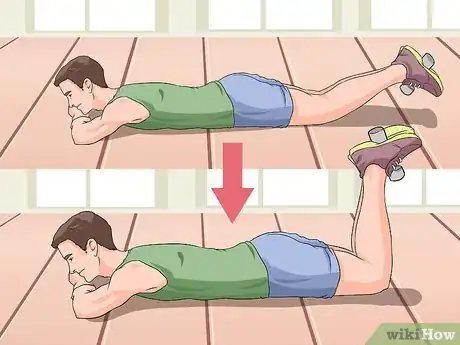
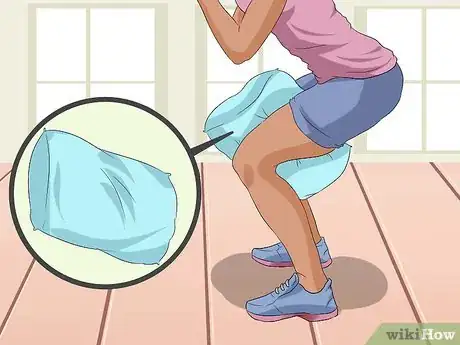

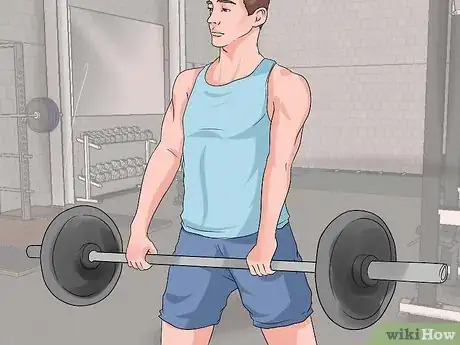
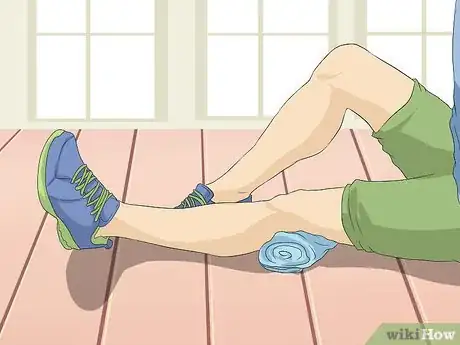
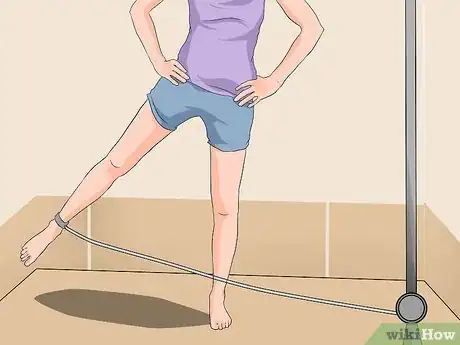
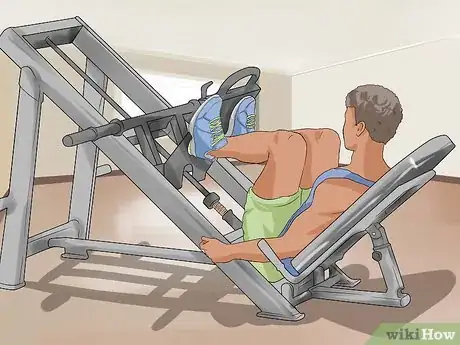

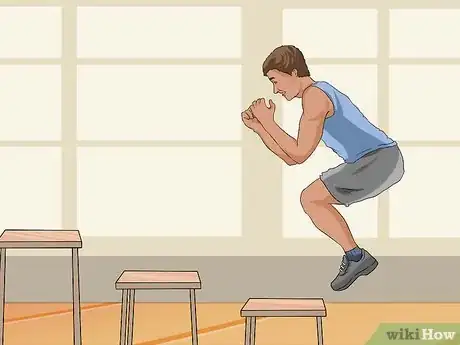
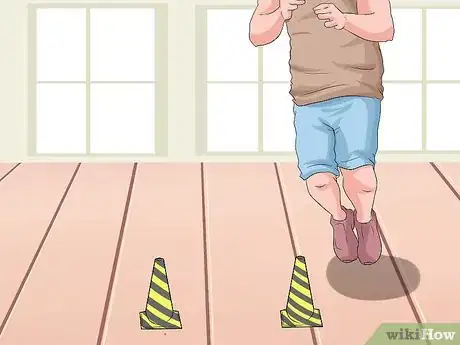
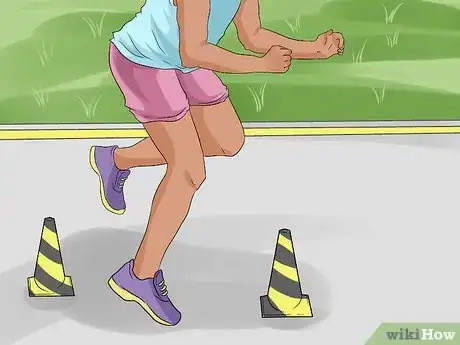
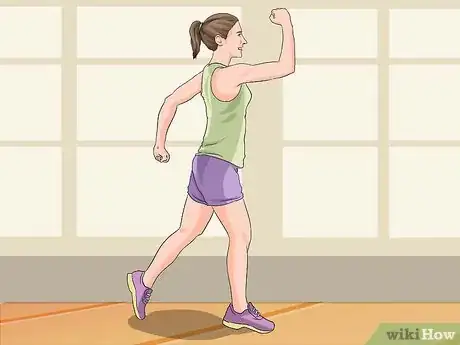
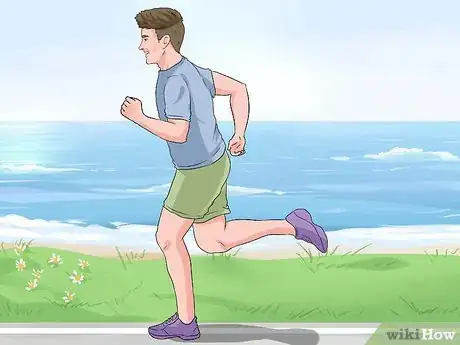

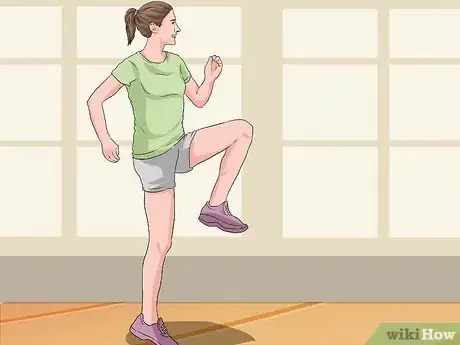

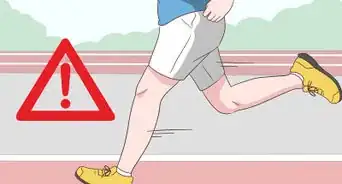





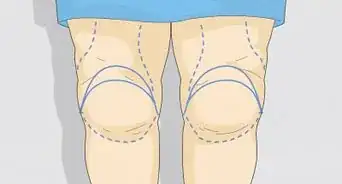



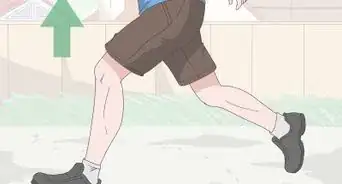


















































Medical Disclaimer
The content of this article is not intended to be a substitute for professional medical advice, examination, diagnosis, or treatment. You should always contact your doctor or other qualified healthcare professional before starting, changing, or stopping any kind of health treatment.
Read More...